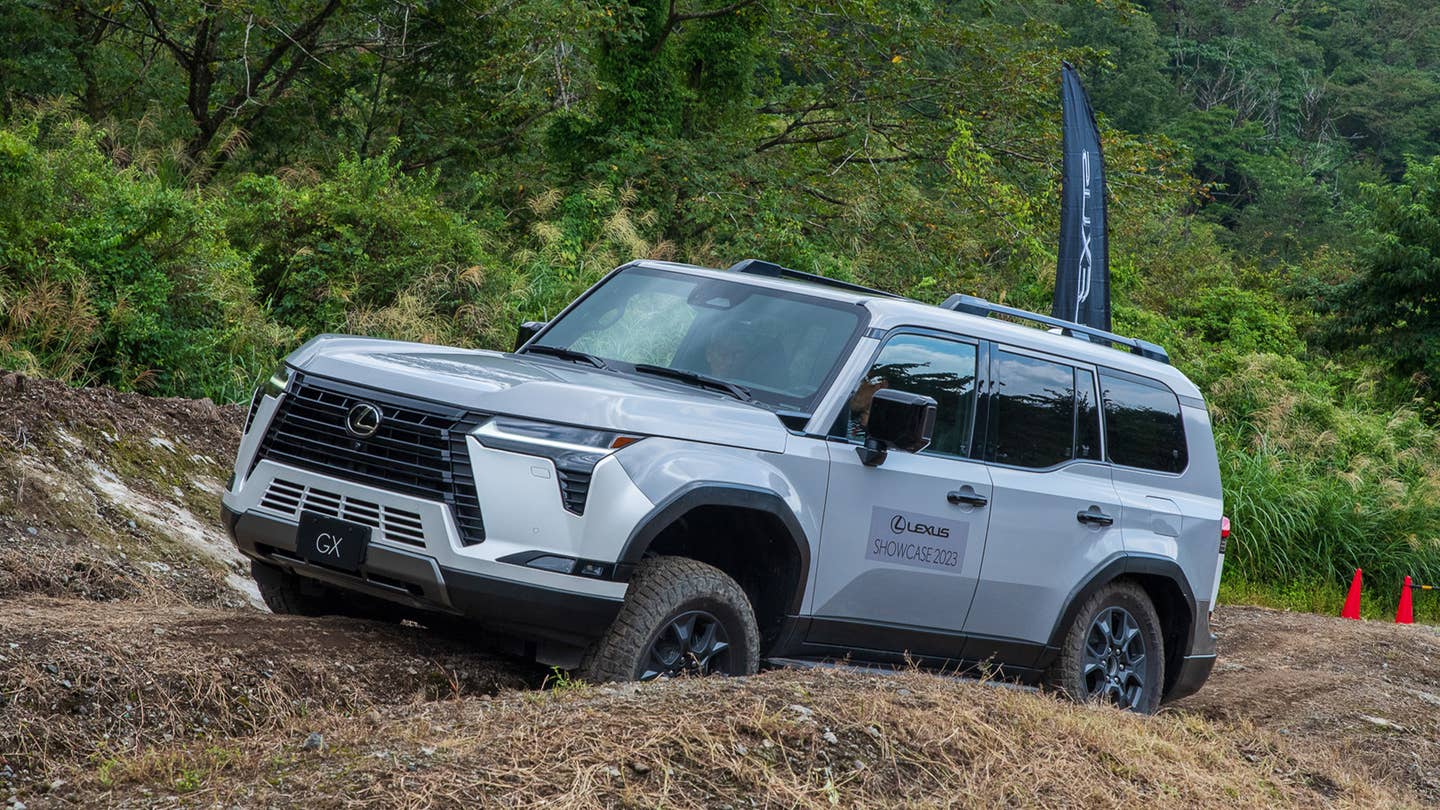It’s all about vehicle control, and as Toyota has already played around with, there are a few tricks to making futuristic EVs feel like their ICE predecessors.

The only people less excited than sports car enthusiasts about electrification are off-roaders. Sure, the examples we currently have of battery-powered four-wheelers are super capable, but that doesn’t necessarily equate to super fun or enjoyable. Still, Lexus is confident that zero-emission powertrain tech will enable it to build better 4x4s. According to the company’s president Takashi Watanabe, Lexus could even replicate the driving experience of classics like the 70-Series Land Cruiser with tricks it already has in its repertoire.
The Drive spoke with Watanabe during a roundtable interview at Fuji Speedway. There, I quizzed him about the prospect of future off-road models as Lexus plans to go fully electric by 2035. He explained that the automaker’s approach to enthusiast EVs is set to be a lot different than others who bank on wicked acceleration to provide driving thrills.
Caleb Jacobs
“As you’re very well aware, the torque that comes out of [EVs] is instantaneous,” Watanabe said. “As soon as you push the accelerator, you get maximum torque. That’s something that’s not possible with internal combustion and so it has that inherent characteristic. However, just because you push the throttle and have amazing and intense acceleration, does that mean it’s a good car? For us, we don’t believe that.
“We want to make sure there’s no delay but everything is intentional. The vehicle answers your request. If the driver wants more acceleration, the vehicle will give it to you. If you then decelerate, it won’t go beyond what you want it to do. What can happen is the driver becomes reactionary to what the car is doing; it reverses the roles. It actually becomes stressful and then driving isn’t as comfortable as it could be. It might be fun, but it’s something you’re always having to be aware of and it does result in fatigue. We would rather go in the direction of being secure where the driver and the car are communicating back and forth. And of course, that travel time is not stressful.”
Watanabe makes the point that Lexus is after a different experience than Jeep, Ford, and even Toyota. While drivers of those brands may want maximum feedback from the vehicle, someone who drops extra cash on a premium rig is probably looking for something more composed. That ethos was also applied to the 2024 Lexus GX Overtrail, which I was able to test during my time at Fuji. I can confidently say the approach pays off, and Lexus already has a way of modifying the truck to fit batteries in its ladder frame.
What’s more, Watanabe says Toyota and Lexus can apply lessons learned from the electric AE86 project. You might remember that as the JDM classic that looks and even shifts like the original, just with batteries and an electric motor. What you might not know is that Toyota went to great lengths to replicate the sound and feel of an internal combustion engine.
“The only thing that still needed to be replaced was the engine vibrations. That’s what was eliminated by that conversion,” Watanabe recounted. “But actually, we took those vibrations and the sound of the engine, and we used speakers to replicate that kind of sensation inside the cabin. We calibrated the speaker frequencies and we put [speakers] on the floor. So we looked at the positioning of the speakers on the floor, and depending on where we put the speakers, we got it to the point where it felt like the engine [was there].
“Battery EVs don’t idle, but that car, when you turn the key, you hear the startup and it ‘idles,’ it vibrates. And you really feel like you’re in a car with an internal combustion. In that moment, you almost wouldn’t be able to tell.”
Caleb Jacobs
An old-school Land Cruiser was parked beside the GX off-road course, so when that was brought up, Watanabe made the connection with iconic models and Lexus’ goal of composed stability going forward:
“We consider BEVs ideal for controlling vehicle movement. Controlling that drive force is going to define the character of the vehicles moving forward. So refining that control of drive force, just like you said with the old Land Cruiser 70-Series, that kind of feeling, we’ll be able to replicate it exactly using BEVs.”
I can’t help but hope that Lexus adds some sort of drive mode that recreates the feel of throwback 4x4s. Maybe the engineers could simulate a transfer case going “clunk,” or a burbling old diesel engine puttering around. It’s a neat thought, even if it is a compromise.
We all have to get past the idea that gas engines will continue on forever, and if companies like Lexus can help us relive the glory days while complying with tight regulations and making an even better trail machine, then that has to be enough.
Got a tip or question for the author? Contact them directly: caleb@thedrive.com


